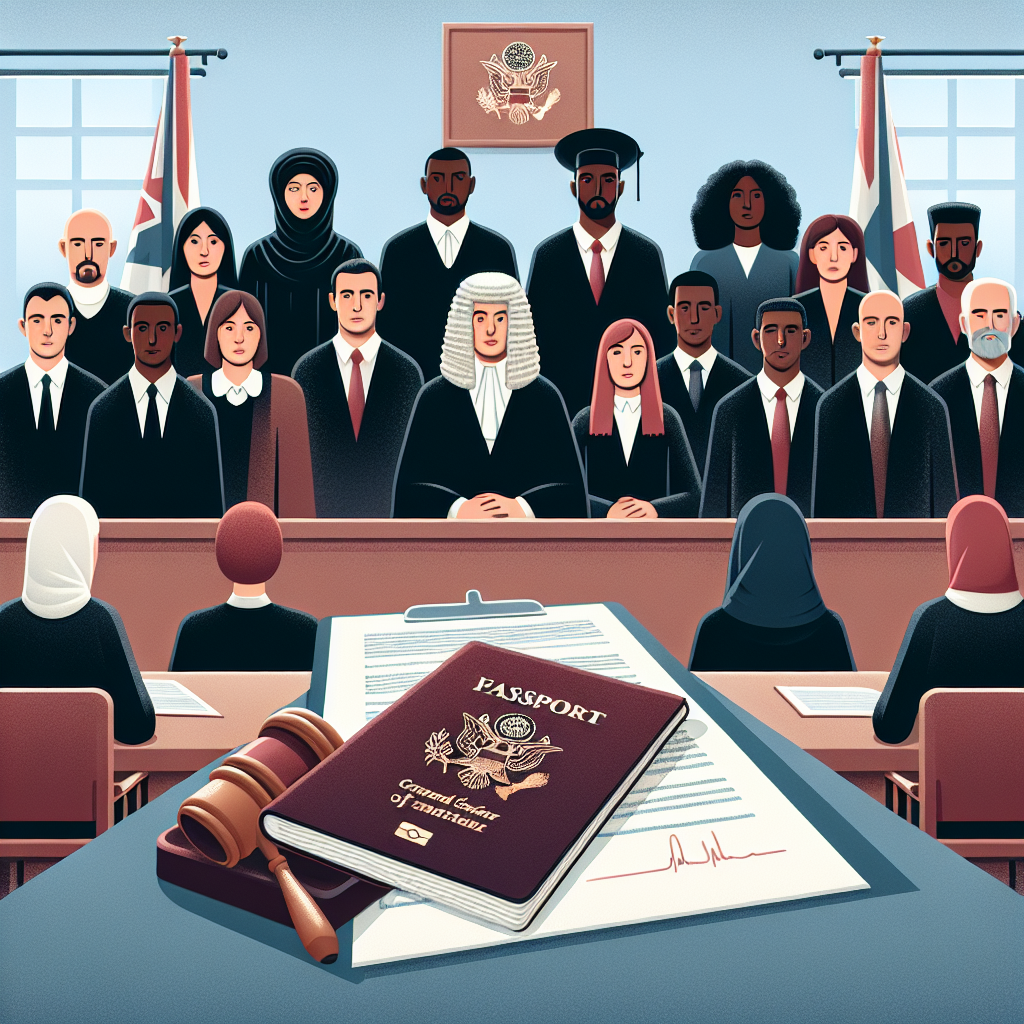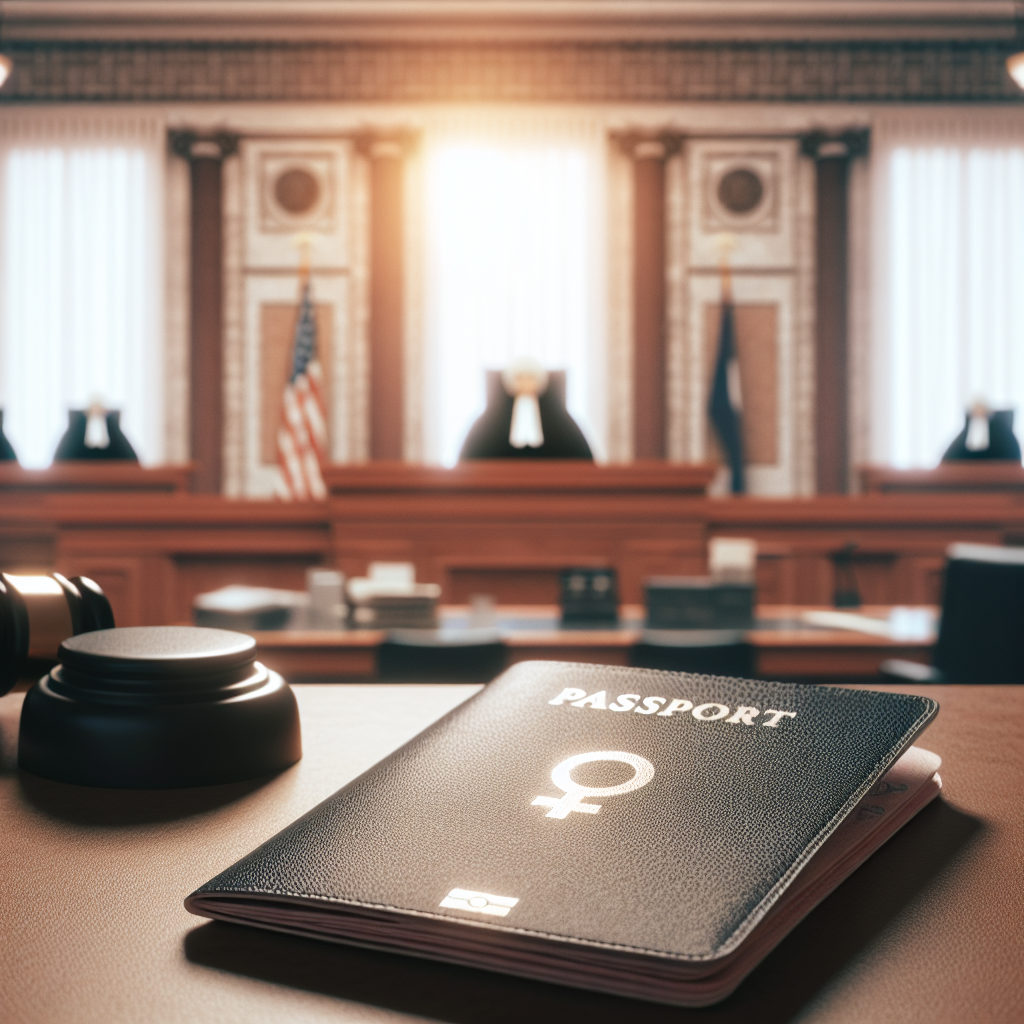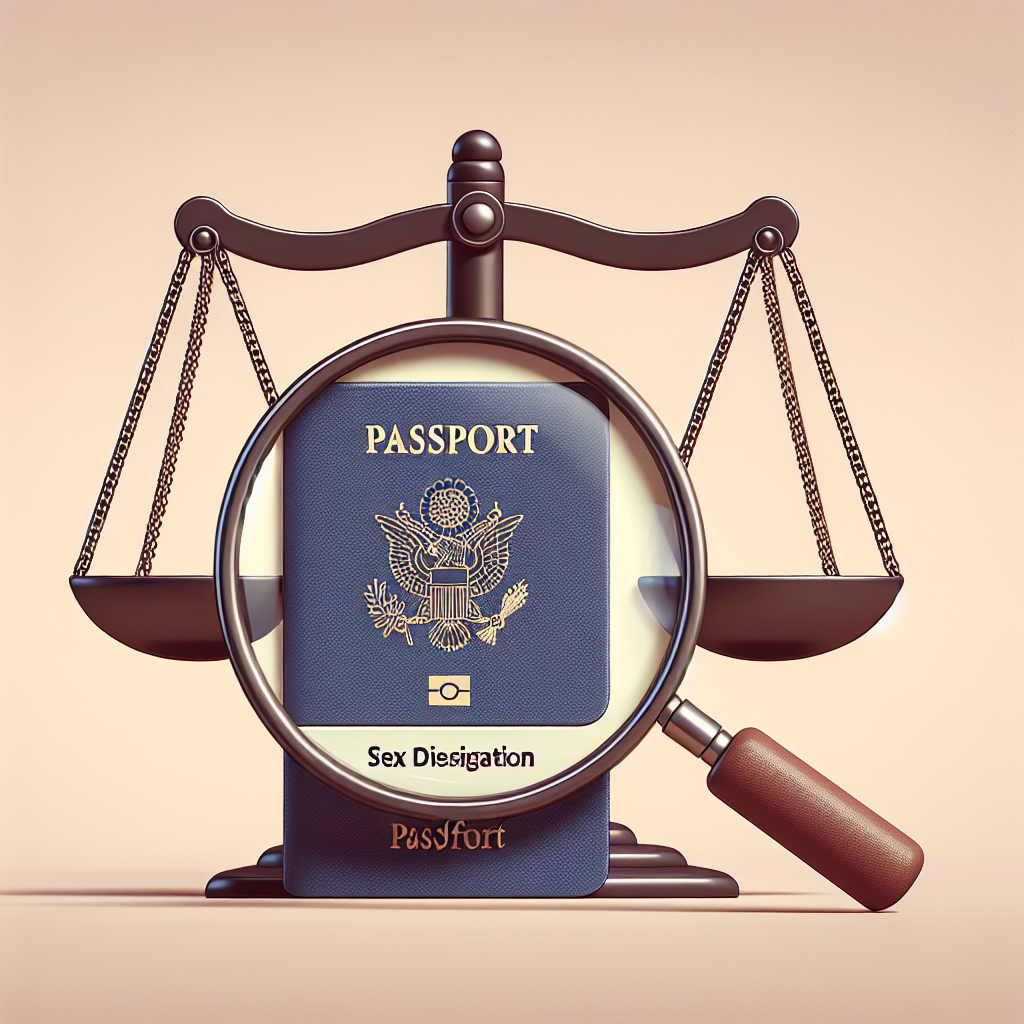The Supreme Court has recently ruled in favor of the Trump administration regarding the sex designations on U.S. passports. This decision comes as a significant moment for both the administration and the ongoing discussions surrounding transgender rights and recognition. The ruling temporarily halts previous court orders that would have allowed transgender and nonbinary individuals to have their chosen sex reflected on their passports, a move that highlights the contentious nature of this issue within the legal landscape.
Background of the Case
Earlier this year, a federal judge in Massachusetts issued rulings that would have mandated the State Department to issue passports reflecting the gender identity of transgender and nonbinary individuals. This legal challenge stemmed from an executive order signed by President Trump on January 20, which declared that the federal government would only recognize two sexes: male and female. The order required that all government-issued identification documents, including passports, accurately reflect the holder’s sex at birth, thereby disregarding the identities of many individuals.
The plaintiffs in the case, seven transgender and nonbinary individuals, argued that this policy was discriminatory and violated their rights. U.S. District Judge Julia Kobick’s orders aimed to counteract the executive order, which had reversed policies established during the Biden administration. Under Biden’s policies, transgender individuals were permitted to obtain passports that aligned with their gender identity without the need for medical documentation, and a third gender marker, “X,” was introduced for nonbinary applicants. This shift represented a significant advancement in recognizing the rights of transgender and nonbinary individuals.
Supreme Court’s Decision
The Supreme Court’s ruling was delivered in a brief, unsigned opinion, which granted the government’s request to put the lower court’s rulings on hold. The majority opinion argued that displaying a passport holder’s sex at birth does not violate equal protection principles, stating that it merely reflects a historical fact. The justices asserted that the government is not subjecting individuals to differential treatment by maintaining such a designation. This decision has been met with mixed reactions, particularly from those who advocate for the rights of transgender individuals.
Justice Ketanji Brown Jackson dissented, expressing concern that the majority’s ruling would lead to immediate harm without sufficient justification. She emphasized that the decision represents a painful distortion of equitable discretion. Justice Jackson’s dissent was joined by Justices Sonia Sotomayor and Elena Kagan, highlighting the division within the Court on this critical issue. The dissenting justices articulated a strong belief that the ruling undermines the rights of transgender and nonbinary individuals and sets a troubling precedent for future cases.
Implications of the Ruling
The implications of this ruling extend beyond the immediate legal landscape, affecting the lives of many individuals who identify as transgender or nonbinary. The decision reinforces a policy that many believe is discriminatory and exclusionary. Advocates for transgender rights argue that the ability to have identification documents that reflect one’s gender identity is crucial for personal safety and dignity. As such, the ruling may lead to increased legal battles and further advocacy efforts aimed at challenging the government’s stance on sex designations.

As the legal landscape continues to evolve, the ruling may also influence public discourse regarding transgender rights and acceptance. The response from various advocacy groups and individuals will likely shape future policies and legal challenges. The ongoing debates surrounding this issue underscore the complexities involved in balancing governmental policy and individual rights, particularly in the context of identity and recognition.
In light of the Supreme Court’s ruling, the legal community and the public will be closely monitoring how this decision affects similar cases in the future. The intersection of law and social issues remains a critical area of focus, particularly as the rights of marginalized communities continue to be at the forefront of legal challenges. For those interested in related legal matters, trump’s tariffs court case may provide further insight into the current judicial climate.
The recent decision by the Supreme Court has significant implications for transgender and nonbinary individuals regarding their identification documents. The court’s ruling temporarily halts a lower court’s order that would have allowed these individuals to obtain passports reflecting their chosen gender identity. This case has sparked considerable debate about the intersection of federal policy, individual rights, and the evolving understanding of gender in contemporary society.
Details of the Supreme Court Ruling
On Thursday, the Supreme Court issued a brief, unsigned opinion that favored the Trump administration’s stance on sex designations for passports. The ruling effectively puts on hold a decision made by U.S. District Judge Julia Kobick in Massachusetts, who had mandated that the State Department issue passports that contained the sex designation preferred by transgender and nonbinary Americans. The majority opinion articulated that displaying the sex at birth is akin to showing the country of birth, which they argued does not violate equal protection principles. This perspective reflects a broader legal stance that prioritizes historical accuracy over individual rights in specific contexts, as noted in the supreme court news.
Dissenting Opinions and Legal Implications
Justice Ketanji Brown Jackson, joined by Justices Sonia Sotomayor and Elena Kagan, expressed strong dissent against the majority ruling. In her dissent, Justice Jackson argued that the majority’s decision could cause immediate harm to transgender individuals without sufficient justification. She emphasized that the ruling represents a troubling departure from equitable discretion, which is essential for protecting vulnerable populations. The dissent highlights the ongoing legal battles surrounding the rights of transgender individuals, particularly in light of the previous administration’s policies that sought to restrict recognition of gender identity. This case underscores the complexities surrounding trump legal challenges and the implications they have for civil rights.

The Background of the Policy Change
The legal conflict stems from an executive order issued by President Trump on January 20, which mandated that the federal government recognize only two sexes: male and female. This order required that all government-issued identification documents, including passports, accurately reflect the holder’s sex as designated at birth. This policy marked a significant shift from the approach taken during the Biden administration, which had allowed transgender individuals to receive passports that aligned with their gender identity without the need for medical documentation. Additionally, the Biden administration had introduced a third gender marker, “X,” for nonbinary applicants, reflecting a more inclusive recognition of gender diversity. The abrupt reversal of these policies has raised concerns and prompted litigation from affected individuals, as seen in the current case involving seven plaintiffs challenging the executive order. The implications of this ruling extend beyond passports, affecting broader discussions on trump administration DOJ policies and their impact on civil rights.
The recent ruling by the Supreme Court in favor of the Trump administration regarding sex designations on passports has reignited significant debate surrounding transgender rights and governmental recognition of gender identity. This decision effectively halts lower court rulings that would have allowed transgender and nonbinary individuals to obtain passports reflecting their chosen sex designation. The implications of this ruling extend beyond mere documentation, touching on the broader themes of equality, identity, and the role of government in recognizing personal rights.
Background of the Case
At the heart of this legal battle is an executive order issued on January 20 by President Trump, which mandated that the federal government only recognize two sexes: male and female. This directive required that government-issued identification documents, including passports, accurately reflect the holder’s sex as designated at birth. The order was met with immediate backlash from advocacy groups and individuals, prompting a lawsuit filed by seven transgender and nonbinary plaintiffs. They argued that the executive order violated their rights and sought to challenge the government’s stance on gender identity.
U.S. District Judge Julia Kobick ruled in favor of the plaintiffs earlier this year, asserting that the existing policy was discriminatory. However, the Supreme Court’s recent decision to stay her ruling underscores the ongoing tension between federal policies and the rights of transgender individuals. The majority opinion from the Supreme Court argued that displaying the sex at birth does not offend equal protection principles, drawing a parallel between this designation and displaying one’s country of birth.
Details of the Supreme Court’s Ruling
The unsigned opinion from the Supreme Court emphasized that the government’s stance was a mere reflection of historical facts, suggesting that it does not constitute differential treatment. This assertion has drawn criticism from dissenting justices, including Ketanji Brown Jackson, who argued that the majority’s ruling allows for the immediate infliction of injury without adequate justification. Dissenting opinions from Justices Sonia Sotomayor and Elena Kagan echoed similar sentiments, highlighting the potential harm this ruling could inflict on vulnerable populations.

The Supreme Court’s decision effectively reinstates the Trump administration’s policy, which contrasts sharply with the approach taken during the Biden administration. Under Biden’s leadership, transgender individuals were permitted to receive passports that aligned with their gender identity without the need for medical documentation, and a third gender marker, “X,” was introduced for nonbinary applicants. This shift in policy reflects a broader societal acknowledgment of gender diversity, which the current ruling now challenges.
Impact on Transgender Rights and Future Implications
The implications of this ruling extend beyond passport issuance; they signal a potential regression in the recognition and rights of transgender individuals in various aspects of life. Many advocates fear that this decision could pave the way for further restrictions on transgender rights, impacting not just documentation but also access to healthcare, employment, and other essential services. The ruling raises critical questions about the role of the judiciary in protecting the rights of marginalized communities and the extent to which government policies can influence personal identity.
As discussions surrounding transgender rights continue to evolve, the Supreme Court’s decision serves as a pivotal moment in the ongoing struggle for equality. The balance between federal authority and individual rights remains a contentious issue, with potential ramifications for future legislation and judicial interpretations. As society grapples with these complex issues, the legal landscape surrounding transgender rights will likely remain a focal point of debate and activism.
For those interested in the intersection of policy and judicial decisions, the implications of the trump tariffs supreme court case also provide a compelling context for understanding how executive actions can shape the legal framework in the United States.